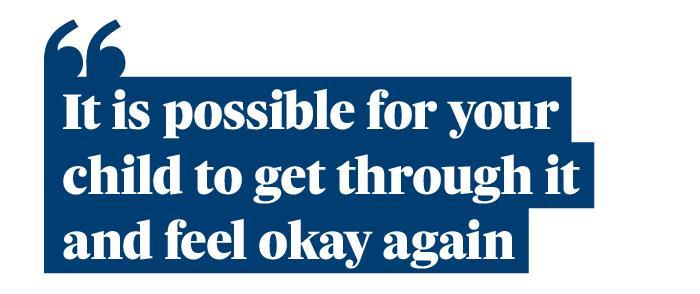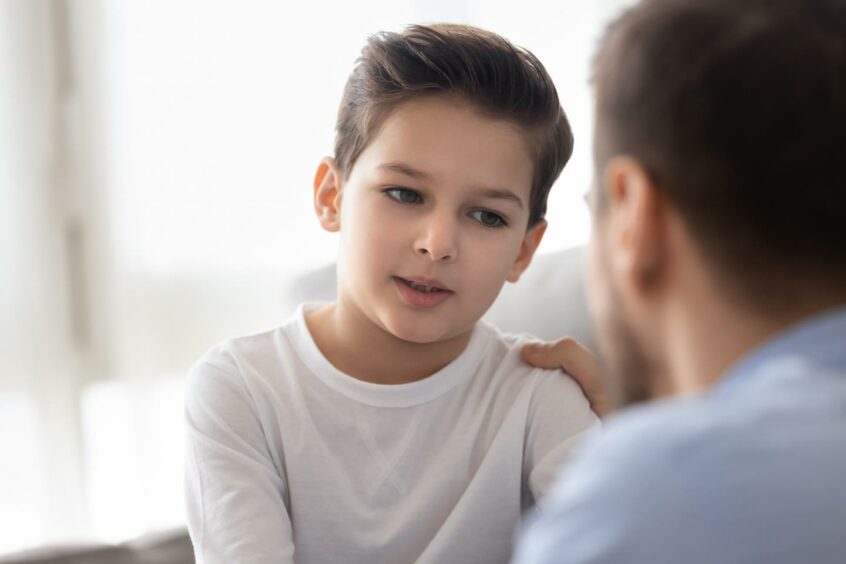It can be hard to know how to support a child who is being bullied but mental health charity YoungMinds has offered us some bullying advice to help parents.
Bullying is among the top concerns of children who contact the charity and the pressures they face to ‘fit in’ are only increasing with the rise of social media.
It can have detrimental effects on a child’s self-esteem and many children may also experience mental health issues following the bullying.
But bullying does not have to define your child and they can get through it, says Stevie Goulding, parents helpline manager at YoungMinds.
He said: “Bullying is among a huge number of pressures children and young people can face, including school stress, pressures around body image, and growing up in the online world, which can mean establishing a personal identity from an early age and feeling the need to live the ‘perfect life’.

“While lots of young people experience bullying, it is an incredibly difficult thing to go through and can have a huge effect on your child’s mental health and wellbeing.
“As a parent, it can also be very challenging and worrying.
“The important thing to remember is that it is possible for your child to get through it and feel okay again, and there are practical steps you can take to address the bullying and its consequences.”
Here is some of the bullying advice YoungMinds has for parents:
Open up a conversation
If you suspect that your child is experiencing bullying, open up a conversation with them about it.
It might help to explain what bullying is and how it can make people feel, which can normalise what they’re going through and make it easier for them to open up.
Listen to what it is like for them and offer emotional support.
Your child may not be ready to open up to you about what is going on, and Stevie says this should not be an automatic cause for panic for parents.
Instead, let them know that they can also talk to teachers or friends, or other family members they are comfortable with.
Keep a log of the bullying
Keep a detailed record of what happens and when, so that you have evidence – this can be a written list, photographs or screenshots of online messages.
Encourage your child to share evidence with you as soon as possible.
Bullying advice can start with building self-esteem
When a child is being bullied, they may start to believe the things that are being said to them, or that they deserve the bullying.
However it is important to help them build their confidence to hopefully help their mental health in the long term.
Stevie says: “For example, you might try regularly doing activities that you know they enjoy together, which can give your child a sense of achievement and belonging.”
Do things they enjoy
Support them to make time for their hobbies and the activities they love to help them relax and switch off from worrying.
This could be things like listening to music, exercising, watching a favourite film or doing something creative.
Block the bullies
Encourage your child to block anyone who bullies them online and spend time with the friends who treat them well.
Help them to reflect on their positive friendships and support them to arrange times to hang out or do activities with these friends.
It could help your child to join a club or group at school, or at an organisation outside of the school, where they can meet people with shared interests.
Anyone who witnesses bullying should report the incidents to a relevant authority, such as teachers, police or parents.
Scotland’s anti-bullying service RespectMe offers guidance for young people who are experiencing bullying and their parents and teachers.
If you feel like the bullying you witnessed at school or online was a hate crime, you can also report it to Police Scotland via 101.
Childline support young people with any worries they may experience, including mental health and bullying.
They can be contacted confidentially on 0800 11 11 or use their free 1-2-1 counselling service.
Read more from our bullying series
- ‘Mummy I just want to die’: Devastating words of Fife girl, 7, after years of bullying
- Bullying in schools: Our survey reveals 9 in 10 parents do not think schools can effectively tackle it
- Types of bullying: What is classed as physical, sexual and prejudicial bullying?
- Autistic Angus teen terrified to go to school after pupil threatens to ‘kill him’
- How to report bullying to school and the police
- OPINION: I attempted suicide after years of bullying – schools need to take it seriously
- Devastating effects of bullying on children in the short and long term













